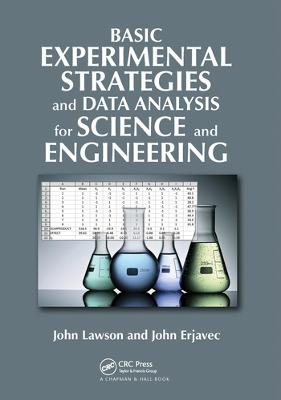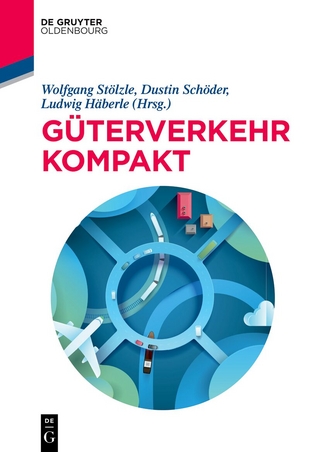
Basic Experimental Strategies and Data Analysis for Science and Engineering
Seiten
2020
Chapman & Hall/CRC (Verlag)
978-0-367-57408-6 (ISBN)
Chapman & Hall/CRC (Verlag)
978-0-367-57408-6 (ISBN)
Although books covering experimental design are often written for academic courses taken by statistics majors, most experiments performed in industry and academic research are designed and analyzed by non-statisticians. Therefore, a need exists for a desk reference that will be useful to practitioners who use experimental designs in their work.
Every technical investigation involving trial-and-error experimentation embodies a strategy for deciding what experiments to perform, when to quit, and how to interpret the data. This handbook presents several statistically derived strategies which are more efficient than any intuitive approach and will get the investigator to their goal with the fewest experiments, give the greatest degree of reliability to their conclusions, and keep the risk of overlooking something of practical importance to a minimum.
Features:
Provides a comprehensive desk reference on experimental design that will be useful to practitioners without extensive statistical knowledge
Features a review of the necessary statistical prerequisites
Presents a set of tables that allow readers to quickly access various experimental designs
Includes a roadmap for where and when to use various experimental design strategies
Shows compelling examples of each method discussed
Illustrates how to reproduce results using several popular software packages on a supplementary website
Following the outlines and examples in this book should quickly allow a working professional or student to select the appropriate experimental design for a research problem at hand, follow the design to conduct the experiments, and analyze and interpret the resulting data.
John Lawson and John Erjavec have a combined 25 years of industrial experience and over 40 years of academic experience. They have taught this material to numerous practicing engineers and scientists as well as undergraduate and graduate students.
Every technical investigation involving trial-and-error experimentation embodies a strategy for deciding what experiments to perform, when to quit, and how to interpret the data. This handbook presents several statistically derived strategies which are more efficient than any intuitive approach and will get the investigator to their goal with the fewest experiments, give the greatest degree of reliability to their conclusions, and keep the risk of overlooking something of practical importance to a minimum.
Features:
Provides a comprehensive desk reference on experimental design that will be useful to practitioners without extensive statistical knowledge
Features a review of the necessary statistical prerequisites
Presents a set of tables that allow readers to quickly access various experimental designs
Includes a roadmap for where and when to use various experimental design strategies
Shows compelling examples of each method discussed
Illustrates how to reproduce results using several popular software packages on a supplementary website
Following the outlines and examples in this book should quickly allow a working professional or student to select the appropriate experimental design for a research problem at hand, follow the design to conduct the experiments, and analyze and interpret the resulting data.
John Lawson and John Erjavec have a combined 25 years of industrial experience and over 40 years of academic experience. They have taught this material to numerous practicing engineers and scientists as well as undergraduate and graduate students.
John Lawson is a professor of statistics in the Department of Statistics at Brigham Young University, Provo, Utah. John Erjavec is a retired professor and chair of the Department of Chemical Engineering, University of North Dakota, Grand Forks, North Dakota.
Strategies for Experimentation. Statistical Analysis of Experimental Data. Basic Two-Level Factorial Experiments. Advanced Topics in the Design and Analysis of 2k Factorial Experiments. General Factorial Experiments and ANOVA. Regression Analysis of Experimental Data. Variance Component Studies. Screening Designs. Optimization Experiments. Response Surface Model Fitting. Sequential Experimentation. Mixture Experiments. Practical Suggestions for Successful Experimentation. Appendix.
| Erscheinungsdatum | 01.07.2020 |
|---|---|
| Sprache | englisch |
| Maße | 178 x 254 mm |
| Gewicht | 752 g |
| Themenwelt | Mathematik / Informatik ► Mathematik |
| Technik ► Maschinenbau | |
| Technik ► Umwelttechnik / Biotechnologie | |
| Wirtschaft ► Betriebswirtschaft / Management ► Logistik / Produktion | |
| ISBN-10 | 0-367-57408-X / 036757408X |
| ISBN-13 | 978-0-367-57408-6 / 9780367574086 |
| Zustand | Neuware |
| Haben Sie eine Frage zum Produkt? |
Mehr entdecken
aus dem Bereich
aus dem Bereich
Grundlagen - Spezialthemen - Übungen
Buch | Softcover (2022)
Springer Gabler (Verlag)
39,99 €


